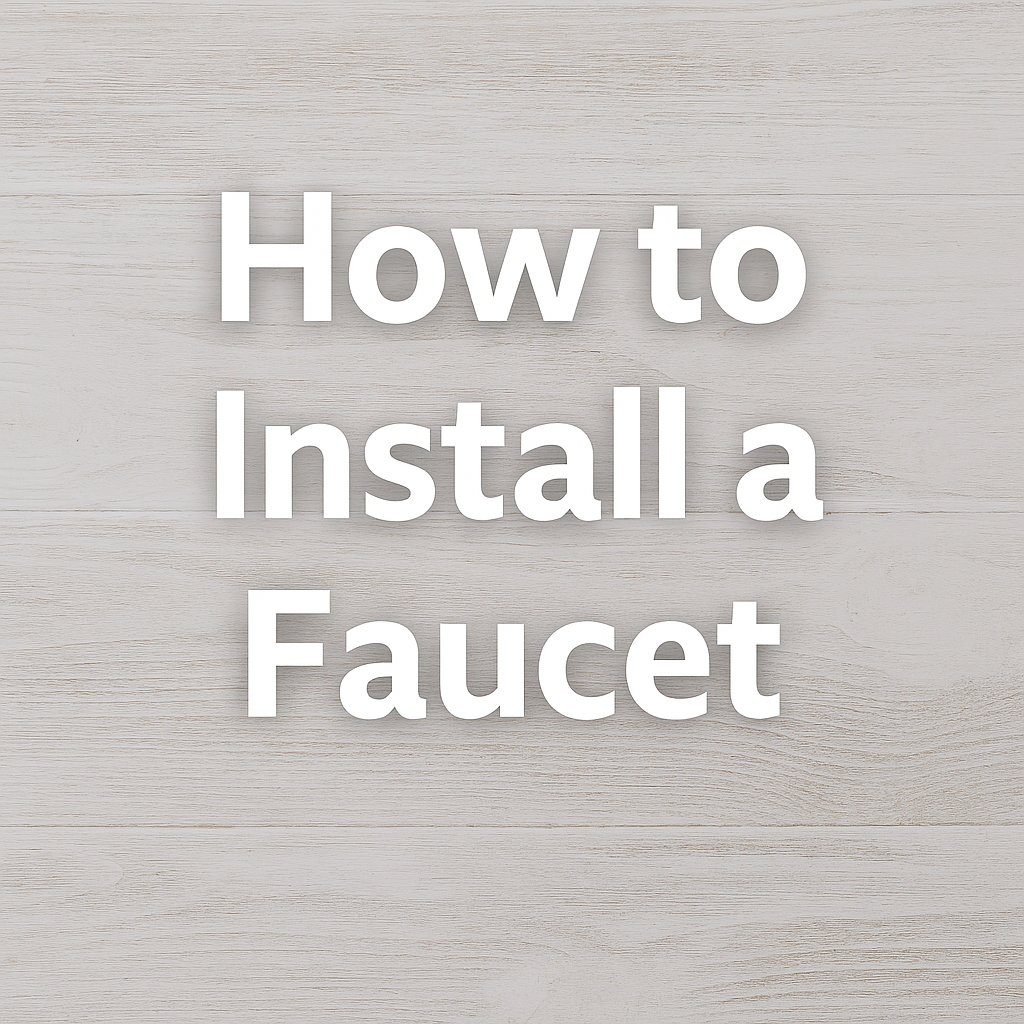New! DIY Project Planner. Plan smarter, skip the spreadsheets. Start Your Free Trial Today →

Whether you’re replacing an old leaky faucet or upgrading to something that actually looks good, faucet installation is one of the easiest plumbing projects a homeowner can tackle. And yes you can do it without calling a plumber or soaking your cabinet. This guide will walk you through how to install a faucet step by step, with beginner-friendly tips, common mistakes to avoid, and tools that make the job easier.
This post contains affiliate links. If you buy through them, we may earn a small commission at no extra cost to you. It helps keep the guides free and the lights on over here at Gold Team Home. Thanks for the support.
Tools We Recommend
Beginner Power Tools Guide
Before anything else, locate the hot and cold water shutoff valves under your sink and twist them clockwise to turn them off. Open the faucet to relieve any pressure.
✅ Pro Tip: If your valves are stuck or leaking, shut off your main water line.
Use your adjustable wrench to unscrew the water supply lines. Then, using a faucet wrench (or serious flexibility), reach up behind the sink to loosen the nuts holding the faucet in place.
Remove any mounting brackets or seals and lift the faucet out from above.
Wipe away any old plumber’s putty, mineral deposits, or gunk left behind. This is your chance to get that grimy area spotless before the new faucet goes in.
Follow the manufacturer’s instructions to seat the faucet properly. Most faucets come with a gasket or putty ring to prevent leaks between the sink and faucet base.
Insert the faucet through the mounting holes and secure it underneath with the provided nuts and washers. Tighten them evenly but don’t overtighten.
Wrap plumber’s tape around the threads and reconnect the hot and cold supply lines. Make sure they’re snug but not overly tight.
If your faucet includes a pull-down sprayer, connect that hose now as well, using the included quick-connect or weight mechanism.
Turn your water supply valves back on slowly. Let the faucet run for a minute or two and check underneath for any drips or leaks. Tighten connections as needed.
✅ Pro Tip: Place a dry paper towel under the supply valves you’ll see water drops clearly if anything is leaking.
If your braided lines are more than 5–7 years old or showing signs of corrosion, swap them out during the install. It’s cheap insurance against a future cabinet flood.
These picks offer a great balance of style, function, and beginner-friendly install:
Learning how to install a faucet might feel intimidating, but it’s one of the easiest plumbing projects you’ll take on as a homeowner. The payoff is instant no more drips, better function, and a cleaner look.
Just take your time, follow each step, and don’t skip the cleanup or test. Once you’ve done it once, you’ll wonder why you ever paid someone else to do it.
Want more beginner DIY confidence?
Check out: